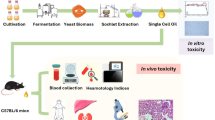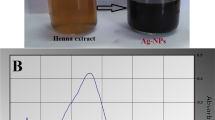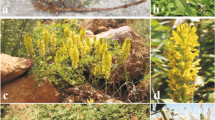Abstract
This study investigated the hypothesis that the salt adaptation response of Enterococcus faecalis alters susceptibility to tea tree oil (TTO). Six E. faecalis isolates were adapted to 6.5 % NaCl, and then exposed to TTO in phosphate-buffered saline (PBS). One isolate was also exposed to TTO in Brain Heart Infusion Broth (BHIB). The viability of salt-adapted and non-adapted control cells was determined at 0, 45 and 90 min and compared. MICs for several antibiotics and TTO were also determined by E test and broth microdilution, respectively. Results showed that susceptibility to TTO in PBS was significantly reduced after salt adaptation for five isolates (83 %) (P < 0.05). Mean differences between salt-adapted and non-adapted cell counts were 2.51 log at 45 min and 2.13 log at 90 min. However, when E. faecalis ATCC 19433 was exposed to TTO in BHIB, no significant differences were seen. In conclusion, salt adaptation resulted in reduced susceptibility to TTO in PBS for the majority of isolates, indicating that cross protection had occurred. This effect was absent in BHIB, suggesting that the uptake of compatible solutes from the growth medium protected non-adapted cells from TTO. Whether this has implications for the clinical effectiveness of TTO remains to be determined.

Similar content being viewed by others
References
Burt S, van der Zee R, Koets A, de Graaff A, van Knapen F, Gaastra W, Haagsman H, Veldhuizen E (2007) Carvacrol induces heat shock protein 60 and inhibits synthesis of flagellin in Escherichia coli O157:H7. Appl Environ Microbiol 73:4484–4490
Carson CF, Hammer KA, Riley TV (2006) Melaleuca alternifolia (tea tree) oil: a review of antimicrobial and other medicinal properties. Clin Microbiol Rev 19:50–62
Clinical and Laboratory Standards Institute. Methods for dilution antimicrobial susceptibility tests for bacteria that grow aerobically; approved standard ninth edition. CLSI document M07-A9. Clinical and Laboratory Standards Institute, Wayne, PA, USA (2012)
Clinical and Laboratory Standards Institute. Performance standards for antimicrobial susceptibility testing; 16th informational supplement. CLSI document M100-S22. Clinical and Laboratory Standards Institute, Wayne, PA, USA (2012)
Cuaron JA, Dulal S, Song Y, Singh AK, Montelongo CE, Yu W, Nagarajan V, Jayaswal RK, Wilkinson BJ, Gustafson JE (2013) Tea tree oil-induced transcriptional alterations in Staphylococcus aureus. Phytother Res 27:390–396
Dryden MS, Dailly S, Crouch M (2004) A randomized, controlled trial of tea tree topical preparations versus a standard topical regimen for the clearance of MRSA colonization. J Hosp Infect 56:283–286
Edmondson M, Newall N, Carville K, Smith J, Riley T, Carson C (2011) Uncontrolled, open-label, pilot study of tea tree (Melaleuca alternifolia) oil solution in the decolonisation of methicillin-resistant Staphylococcus aureus positive wounds and its influence on wound healing. Int Wound J 8:375–384
Fisher K, Phillips C (2009) The ecology, epidemiology and virulence of Enterococcus. Microbiology 155:1749–1757
Flahaut S, Benachour A, Giard JC, Boutibonnes P, Auffray Y (1996) Defense against lethal treatments and de novo protein synthesis induced by NaCl in Enterococcus faecalis ATCC 19433. Arch Microbiol 165:317–324
Flahaut S, Hartke A, Giard JC, Auffray Y (1997) Alkaline stress response in Enterococcus faecalis: adaptation, cross-protection, and changes in protein synthesis. Appl Environ Microbiol 63:812–814
Flahaut S, Laplace JM, Frere J, Auffray Y (1998) The oxidative stress response in Enterococcus faecalis: relationship between H2O2 tolerance and H2O2 stress proteins. Lett Appl Microbiol 26:259–264
Hammer KA, Carson CF, Riley TV (1999) Influence of organic matter, cations and surfactants on the antimicrobial activity of Melaleuca alternifolia (tea tree) oil in vitro. J Appl Microbiol 86:446–452
Hammer KA, Carson CF, Riley TV (2012) Effects of Melaleuca alternifolia (tea tree) essential oil and the major monoterpene component terpinen-4-ol on the development of single- and multistep antibiotic resistance and antimicrobial susceptibility. Antimicrob Agents Chemother 56:909–915
Hammer KA, Heel KA (2012) Use of multiparameter flow cytometry to determine the effects of monoterpenoids and phenylpropanoids on membrane polarity and permeability in staphylococci and enterococci. Int J Antimicrob Agents 40:239–245
Lenz CA, Hew Ferstl CM, Vogel RF (2010) Sub-lethal stress effects on virulence gene expression in Enterococcus faecalis. Food Microbiol 27:317–326
Ott E, Saathoff S, Graf K, Schwab F, Chaberny I (2013) The prevalence of nosocomial and community acquired infections in a University hospital: an observational study. Dtsch Arztebl Int 110:533–540
Owens C, Stoessel K (2008) Surgical site infections: epidemiology, microbiology and prevention. J Hosp Infect 70(Suppl 2):3–10
Rince A, Flahaut S, Auffray Y (2000) Identification of general stress genes in Enterococcus faecalis. Int J Food Microbiol 55:87–91
Rince A, Uguen M, Le Breton Y, Giard JC, Flahaut S, Dufour A, Auffray Y (2002) The Enterococcus faecalis gene encoding the novel general stress protein Gsp62. Microbiology 148:703–711
Sleator R, Hill C (2002) Bacterial osmoadaptation: the role of osmolytes in bacterial stress and virulence. FEMS Microbiol Rev 26:49–71
Solheim M, La Rosa SL, Mathisen T, Snipen LG, Nes IF, Brede DA (2014) Transcriptomic and functional analysis of NaCl-induced stress in Enterococcus faecalis. Plos One 9:e94571
Acknowledgments
The authors thank Dr. Christine F. Carson and Dr. Kerry C. Carson for scientific input. The authors acknowledge PathWest Laboratory Medicine WA for providing reference strains and clinical isolates. There is no funding to declare.
Author information
Authors and Affiliations
Corresponding author
Ethics declarations
Conflict of interest
No conflict of interest to declare.
Rights and permissions
About this article
Cite this article
Lim, E.L., Hammer, K.A. Adaptation to NaCl Reduces the Susceptibility of Enterococcus faecalis to Melaleuca alternifolia (Tea Tree) Oil. Curr Microbiol 71, 429–433 (2015). https://doi.org/10.1007/s00284-015-0871-1
Received:
Accepted:
Published:
Issue Date:
DOI: https://doi.org/10.1007/s00284-015-0871-1




